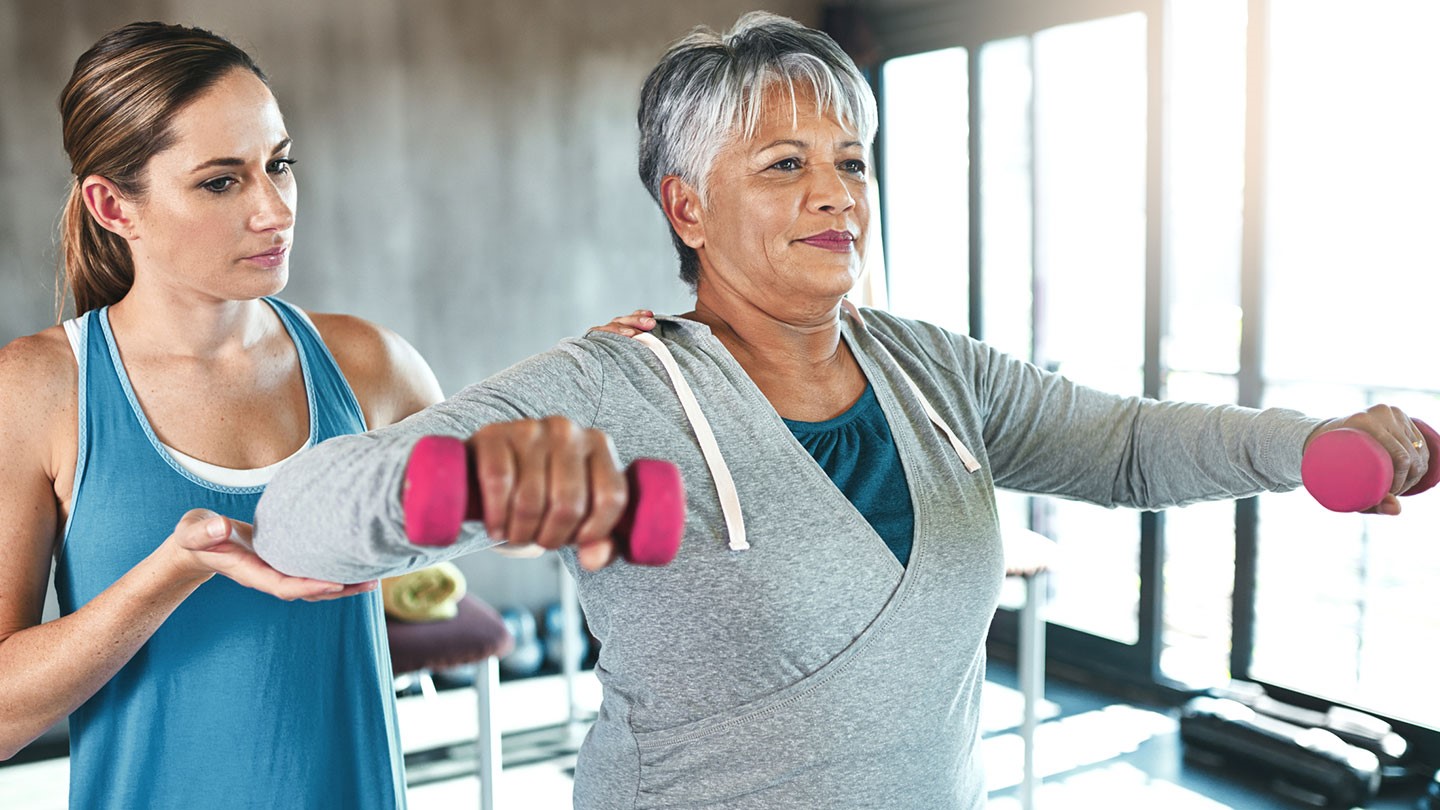Sudden weight loss is extremely common. It is mainly adopted by people who are depressed because of their weight and want to reduce weight rapidly. There can be various reasons why people would want to adopt sudden weight loss techniques. Few of these reasons are obesity, feelings of social neglect, heart diseases and inactivity or lethargy.
Sometimes many people want to reduce weight as soon as possible. They try to lose weight by dieting or by consuming certain medications. This might result in a lot of complications such as:
If you reduce weight rapidly, it might cause the skin to be left behind and also it will cause the skin to sag. This also creates stretch marks on the surface of your skin from where you intend to lose weight. This might give a very unsightly appearance to your body. So it is better to reduce weight slowly.
Many people try to starve themselves while dieting to get faster results. This is extremely harmful for your body. It can result in dehydration and sometimes also lead to nausea or fainting.
Rapid weight loss can also make you lose water from your body. This can be extremely detrimental for your health. It is difficult to burn a lot of calories in a short time instead you might be burning water from your body which is very harmful.
Sudden weight loss is not a permanent solution. You should be very careful while adopting rapid forms of weight loss exercise or diet, you might lose weight for a limited period, but since your body isn’t trained to adapt to temporary and rapid changes, you might start gaining weight rapidly instead.
Rapid weight loss can also lead to the formation of gallstones. It can also cause infection because of obstruction in the normal flow of the bile from the gallbladder to the intestine.
Hair loss can also occur, if you are trying to lose weight rapidly. Protein intake gets reduced when you follow a strict diet plan for rapid weight loss. This can make your hair extremely brittle and dry hence causing it to break.

Health is wealth! This age old adage holds true even today. The usual practice of 3 meals a day needs some tinkering and 5 small meals a day seems like a good way forward. Go to any dietician or any nutritionist and they will vouch for its benefits.
So, let us now take a look at the many advantages that come up with this multiple-meal plan:
- Alters the food schedule and instils a sense of discipline
It helps in altering your food schedule. When you spread your meals throughout the day, it allows you to try different dishes without over consuming any one dish. With more opportunities to eat healthy, you can develop proper diet charts and follow it properly across the entire day. Moreover, it teaches you discipline to keep a check on your diet.
- Keeps a check on binge eating and over eating
Five meals a day plan can help you control your weight. Intake of small meals prevents binge eating. You don't need to consume in large quantity at once if there are more meals to look forward to , throughout the duration of the day. Smaller meals condition you in such a way that you do not indulge in overeating even if you are outside.
- Something in every meal
Since you're opting for five meals a day, you will indulge in different types of food items throughout the day right from vegetables, fruits, cereals, eggs, milk-shakes and much more. This will not only keep your palette satisfied, but will also make sure that you get all the right amount of nutrients as nothing healthy will be left out.
- Goes hand in hand with all the diet charts and plans
Eating healthy and in small portion ensures that you are on course for your diet plan. Five meals a day will give you a chance to screen your nourishment intake and manage it more viably. It also helps in keeping your appetite under check. It maintains a healthy balance between healthy eating and satiating your hunger.
Disregard the three-feast model; it has now become obsolete. Your busy schedule requests that you take a more dynamic approach to your nourishment. Five meals a day is just the right way to ensure that you have your share of proper nutrients every day.
Obesity not only leads to a life full of health problems like diabetes and heart diseases, but it can also diminish your love life. It can lead to decrease of stamina, increases sexual brokenness and hormonal irregularity. Here are the primary nine things that losing weight can help you with, and in return, make your sex life better.
Erectile dysfunction: Heavy people are likely to experience the ill effects of erectile dysfunction and impotency. Issues related to obesity like elevated cholesterol, hypertension and diabetes decrease the blood flow to all parts of the body, including the penis, hence bringing on issues with erection. Different reviews have demonstrated that losing a little measure of weight can beat this condition.
Hormonal imbalance and low charisma: Obesity is specifically connected to hormonal imbalance and lower testosterone levels, which thus can hinder sexual desires in both men and women. Another issue is an increased muscle to fat ratio, which leads to more sex hormone restricting globulins in the system.
Infertility: In women, obesity leads to a decrease in the number of eggs.
Diseases that obstruct sex: People who are heavy, especially in the pelvic region, have a tendency to experience the adverse effects of a large number of illnesses, which can affect their sexual experiences in different ways. This can be because of physiological or mental reasons or because of medicines taken for that illness. Diabetes, heart diseases, cancer, hypertension, depression, dementia and different diseases all affect the sexual working.
Sexually transmitted diseases and undesirable pregnancies: Since heavy individuals are probably going to have less sex than the others, they are likelier to display high hazard of sexual conduct. They are also more likely to get pregnant because of their tendency to be unresponsive to certain medications due to reduced blood flow.
Less sex positions conceivable: Tragically, the changing of positions during intercourse can be difficult when one or both partners are fat. Moreover, if both the partners are heavy, it can also hinder penetration.
Less inclined to engage in sexual relations: Overweight people are continually going to think that it is harder to look for a partner and thus feel less attractive. Hence, they hardly engage in sexual activities.
Low self-esteem and wretchedness: We live in a society where heavy individuals are routinely ridiculed. This sort of isolation begins when a person is extremely young and obesity turns into the characterizing normal for that person, regardless of their different qualities.
Absence of stamina: Obesity is regularly connected with sluggishness and an inactive way of life. Moreover, this may regularly hinder the sexual experiences of obese people. In men, it will likewise diminish their ability to keep.
With age comes many things: greater wisdom; deeper empathy; a greater sense of knowing who you are; and less happily, the very real possibility of a bigger pants size.
Starting in your 40s, it's easier than ever for the pounds to creep on and tougher to take them off. Thanks to a slowing metabolism you could be burning 300 fewer calories per day than you did in your early 20s, according to the American Council on Exercise. What's more, falling estrogen levels during perimenopause and menopause (which begin in your early 40s) can cause insulin sensitivity, which makes it harder for your body to control the amount of sugar in your blood, says Caroline Cederquist, MD, a board-certified bariatric surgeon and founder of the meal delivery service BistroMD. This can make your blood sugar levels more prone to spiking and crashing, which can increase your urge to snack especially on high-carb, sugary junk, Cederquist says.
Want to get in the best shape of your life?
In Fit After 40, Natalie Jill coaches you though routines to help you drop pounds, firm up, and transform your entire body in your 40s, 50s and beyond!
Put it together, and it's no wonder so many women over 40 end up hitting a weight loss wall. But it doesn't have to be that way. With a few smart moves, you can outsmart your slowing metabolism and get lean — for good.
Remember the golden rules of weight loss.
1. Sure, some things change after 40. But the basic tenets of successful weight loss stay the same, no matter how old you are. Before you take steps to ageproof your diet plan, it's a good idea to brush up on the basics.
2. You need to eat less. It doesn't matter if all you eat is grilled chicken, brown rice, and broccoli. If you don't cut back on your portions, you won't lose weight. Everyone's calorie needs are different, but in general, a woman eating 2,000 calories per day should aim to cut back by 400 to 500 calories, recommends Frances Largeman-Roth, RDN, nutrition expert and author of Eating in Color.
3. You should aim to lose 1 to 2 pounds per week. Those drop-a-dress-size-in-a-week plans are tempting. But the slow and steady approach is more sustainable since you're more likely to build healthy habits (like exercising more and eating more veggies) that will help you stay leaner in the long term.
4. Skipping meals will mess with your metabolism. When you skip breakfast or dinner, it tells your body to squirrel away calories instead of burning them. Skipping meals also increases the chances that your blood sugar will crash, leaving you ravenous for a quick energy hit in the form of sugary carbs, Cederquist says.
Rethink your nutrients.
5. Keeping your carbs in check especially the refined kind can help combat age-related insulin resistance and promote steady blood sugar levels, Cederquist says.
6. Adding more protein to your diet can also help. Not only does the nutrient help stave off age-related muscle loss, but it also helps keep your metabolism revved, because the body has to work harder to digest it than, say, a bagel, Cederquist says. How much of each nutrient you consume each time you eat matters too. In a perfect world each meal and snack should have:
1. Vegetables or fruit: Fill half of your plate with these. They're high in fiber and water, so they'll take up lots of space in your stomach without contributing too many calories to your diet.
2. Lean protein: Your plate should have a serving that’s about the size of your palm. Good sources include Greek yogurt, eggs, chicken, and fish.
3. Complex carbohydrates: Your plate should have a serving that’s the size of your closed fist. Whole grains, beans, fresh fruit, and starchy veggies (like sweet potatoes) are all good choices.
4. Healthy fats: These can add up quickly when you're trying to lose weight, so it's worth measuring your fats. Aim for 7 to 10 grams every time you eat. That’s 1½ tsp of olive oil, a quarter of an avocado, or two tablespoons of nuts or seeds.
Many think of exercise as the solution for all of their health woes even those related to the aging process. Of course, no amount of physical activity can stop us from getting older, but there's plenty of evidence that proves that physical activity can increase life expectancy by limiting the development and progression of chronic diseases something many folks start thinking about after they turn 40.
Want to get in the best shape of your life? In Fit After 40, Natalie Jill coaches you though routines to help you drop pounds, firm up, and transform your entire body — in your 40s, 50s, and beyond!
"There comes a point when we realize we're no longer invincible," says Holly Perkins, a personal trainer and author of Lift to Get Lean. "Believe it or not, the body starts to decline after about 30, and that decline gets more aggressive every year." The good news: Exercise not only helps you feel (and look!) better, it can also slow that decline, helping you stave off some common health conditions.
Here, five exercises you should start doing every week once you're in your 40s to stay healthy, happy, and looking as great as you feel.
To prevent heart disease…
Try: Cardiovascular workouts, 3 to 4 times a week
Less than 1% of American women between the ages of 20 and 39 suffer from coronary heart disease, according to a recent National Health and Nutrition Examination Survey. However, among 40- to 59-year-olds, that number increases nearly 10-fold, to 5.6%. So how can you stay healthy?
The word "cardio" is short for "cardiovascular," so many people know that this kind of heart-pumping exercise will keep the heart muscle strong, Perkins says. (Running, spinning, dancing, rowing, and swimming all count!) However, if you really want your heart health to benefit from your cardio workouts, you need to exercise at 80% of your maximum heart rate for at least 30 minutes, 3 to 4 times a week.
So, if you're barely breaking a sweat while walking or taking it easy during your favorite Zumba class, it's time to pick up your pace and increase your effort, Perkins says. "Cardio workouts should feel effortful — like you could do it forever but wouldn't want to."
To ward off osteoporosis…
Try: High-impact activities, 1 to 2 times a week
According to the National Osteoporosis Foundation, approximately 1 in 2 women over age 50 will break a bone because of osteoporosis, a condition in which the bones become brittle, increasing the risk of fractures.
While you may already know that calcium can keep your skeletal system strong, recent research reveals that high-impact, weight-bearing exercise can help build bone strength, too, Perkins notes. "There's still widespread misperception that high-impact activities do more harm than good, but that's simply not the case — particularly when it comes to bone health," she says.
"Dancing, jumping jacks, racquet sports, and even adding a light jog into your go-to walking workout are all great examples of exercise that can keep your bones strong."
To fight arthritis…
Try: Strength training, 2 to 3 times a week
The risk of developing arthritis increases with age. However, chronic joint pain and stiffness can plague adults of all ages — especially those who are overweight and those who have suffered a previous joint injury, according to the Arthritis Foundation. That said, it's never too soon to start protecting your body.
Strength training is one of the best ways to prevent the aches and pains. "Strength training has been proven to decrease pain associated with arthritis — and prevent its onset in the first place," Perkins explains. And you don't have to spend hours in the weight room to reap the benefits. "All you really need to do is some form of a squat, deadlift, and overhead press to strengthen multiple joints and muscles."
To fight depression…
Try: Yoga, once a week
Women between ages 45 and 64 have an increased risk of depression, according to John Hopkins Medicine, one of the leading healthcare systems in the United States.
Though any form of exercise can help stave off anxiety and depression, a growing body of research shows yoga may be particularly beneficial for reducing stress and regulating mood. One study found that yoga increases levels of GABA, a mood-regulating neurotransmitter that's typically deficient in those with depression and anxiety. Another study found that women suffering from mental distress were less stressed after participating in a three-month yoga class.
"We know that yoga is so good for stress reduction, and we know there's a correlation between stress and mood disorders," Perkins says. "Even better, certain styles of yoga are also a great weight-bearing strength workout and even offer some cardiovascular conditioning, making it a win all around."
To fight back pain...
Try: Holding a plank for 90 seconds, 3 times a week
Most people experience back pain for the first time between the ages of 30 to 40, and back pain becomes more common as we get older, according to the National Institute of Arthritis and Musculoskeletal and Skin Diseases, a division of the National Institutes of Health.
Strengthening your core can help ward off the pain. The plank is a great move to try because it tones all of the core muscles of the body. Not only does it work the abs, it also challenges the muscles in the chest and those surrounding the spine, Perkins explains. "As these muscles become stronger, your entire midsection tightens, which ultimately supports your lower back, keeping it pain-free."
To ensure you're holding the plank position correctly, stack your wrists under your elbows, position your elbows under your shoulders, and push the floor away from you with your feet. Your legs should be outstretched behind you, and your feet should be shoulder-distance apart. Also, be sure to pull your bellybutton in towards your spine to turn "on" your abs. Stay here for 30 seconds, come down to your knees to take a short break, and then repeat the exercise two more times. As you get stronger, try holding the position for 90 seconds without a break.










